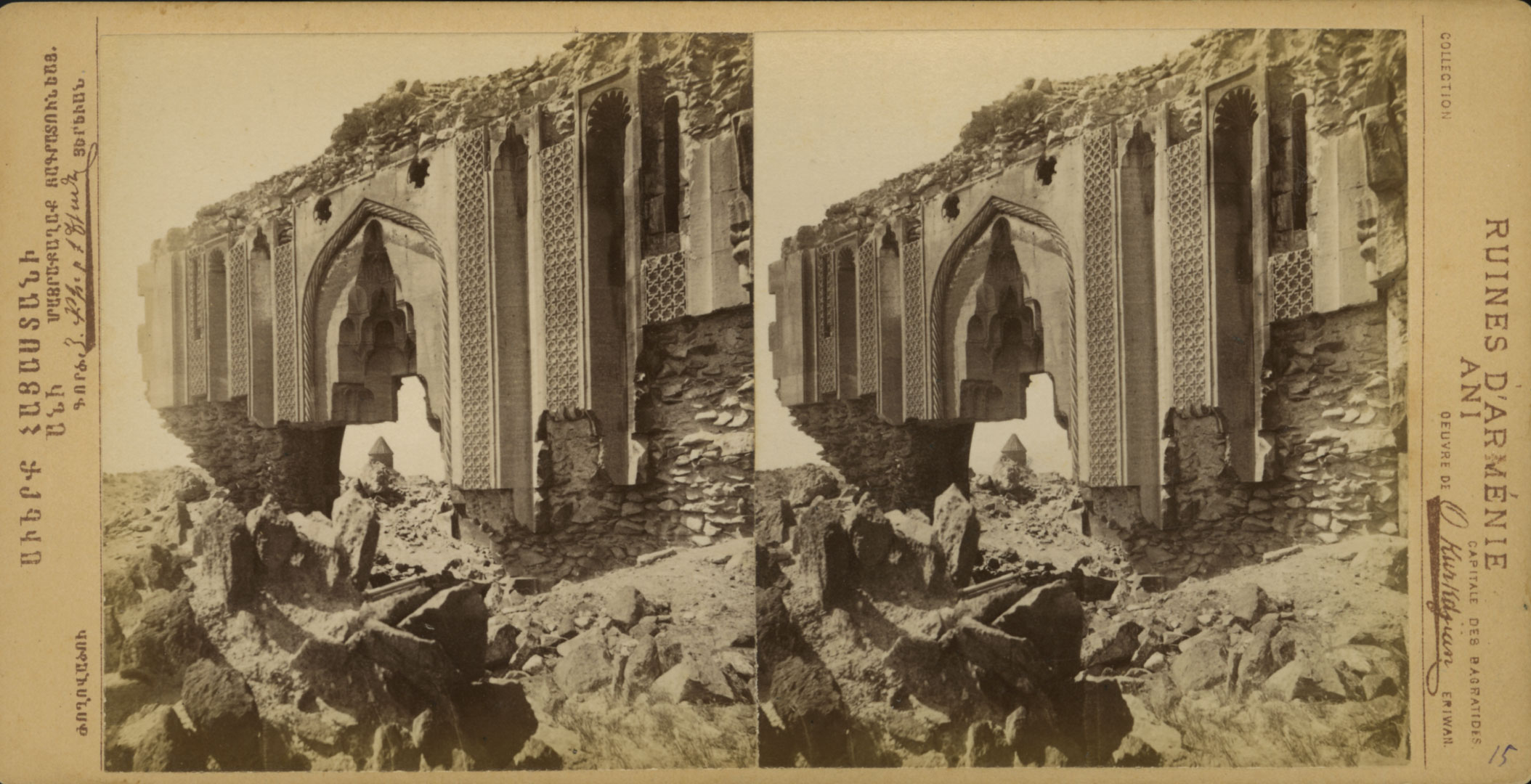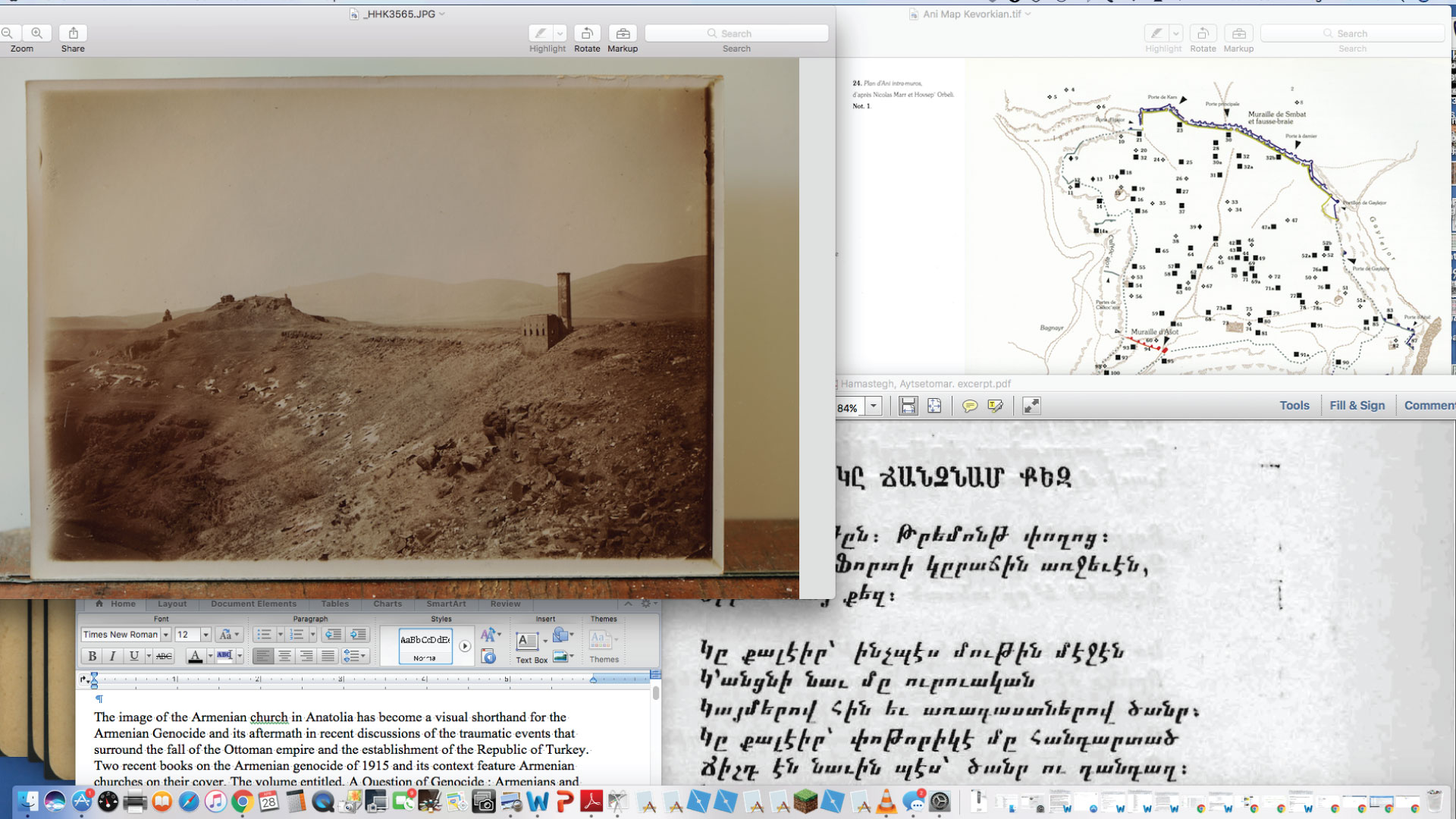Timelessness and the Power of Memory
Heghnar Watenpaugh on the Problem with Timelessness and the Power of Memory
By Lindsay Baltus

Heghnar Zeitlian Watenpaugh, art history professor at UC Davis, was recently awarded a Guggenheim fellowship to support work on her upcoming book about the cultural heritage of the medieval Armenian city of Ani. Her previous book, The Missing Pages: The Modern Life of a Medieval Manuscript from Genocide to Justice, tracks the itinerary of a fragment from a 13th century book of gospels to tell a larger story of the Armenian genocide and resulting global diaspora, and just won an Independent Publisher Book Award gold medal.
We spoke to Professor Watenpaugh about imagined memories, what it means to call a historical site “timeless” and how places can hold great meaning for people even when they are unable to visit them in person.
LB: Your current book project is about the medieval ghost city of Ani. What is it like to visit the site?
HW: It’s vast. The landscape is barren; there are no trees. It’s on the migration path of birds who make formations in the sky. The heat is intense in the summer. In the winter it gets blanketed with snow. And in this rugged, desolate landscape you have these enormous ruins, and because they are ruins, it’s difficult to recognize them as what they once were, which is a palace, a fire temple, a church.
Generations of visitors have found the place mournful, cemetery-like, terrifying, wretched, but also majestic, beautiful, powerful, mystical. People have visions: a very pragmatic professor at a Turkish university told me she saw a white horse, and then the horse disappeared.
Ani is an object of religious veneration and a cultural referent for a global diaspora of people who have never been there and cannot go there, not only because it is remote but because it was a military zone and is on a closed border. So it’s connected to these global networks of people who make cultural heritage about it even though it is inaccessible to them.
LB: You have said that during the Armenian genocide and exile people clung to art as a way to get through. What has your research taught you about the need for art during difficult times?
HW: When I went on a book tour after writing The Missing Pages, I met so many people who showed me objects that they had with them in their families. Some of these were everyday objects, like a button, or the key from the old house. Sometimes a document: the deed to the house that they had. One wonderful woman in San Francisco had a small family Bible that had been preserved in their family, and in the end they gifted it to a museum in Armenia. So even after I said that, I've been more amazed at how certain objects and works of art become critical. They become some kind of symbol or medium, they become an object that memorializes something, or they become a kind of magical object that means something to people.
So I learned about objects that people take with them and what role that plays in the process of survival, in the process of resilience. But in the case of Ani it's also the power of memory or representation of places, which can be extraordinarily real. I found a poem written by an Armenian American, a survivor of the genocide who had never been to Ani. In the poem he meets someone in Boston and thinks he recognizes him, but they don't talk to each other. Then he has a blast of memory: He remembers that he and this stranger were young people in Ani at the height of the city. The poem reconstructs the life of these two young men in Ani. The ruler comes back from the hunt with his hunting dogs, the church bells ring, the bazaar—it’s incredible, it's so tactile. I want to try to understand this kind of memory attached to a place that people are deeply invested in even if they've never been there, and how this imagined space can also be lived space.
LB: How do you think about time in your work?
HW: People describe Ani as “timeless,” or they say that being there is like “stepping back into time.” But what does it mean that an object, a building, a city appears to be timeless, whereas of course in reality it exists in the same space-time as you? This medieval ghost city also dates to 2020.
There's a classic book in urban history about historic preservation: the title of the book is What Time is This Place? These are the kinds of issues that I've been interested in. Historic preservation and the cultural heritage movement in general are about negotiating the relationship between the present and the past, and expressing that either museologically or through various kinds of presentation--propping up the old buildings. It plays with these notions of present and past. Is historical time linear? Is it circular? Is it really possible to step into the past?
The Missing Pages is about an object, not a building: a fragment of a medieval manuscript that today is at the Getty. How do you present objects like this? Do you talk about them merely as medieval objects? The artist who created it was from the 13th century, so a lot of exhibitionary settings will talk about the moment of creation: this artist, his style, his patron, historical circumstances of the Middle Ages, how this work reflects crossroads of cultures. But in more recent debates in museology, the idea is that the object exists in time. The object, even if created in the medieval period, does things today, signifies something today. So by presenting this object only as medieval, you are glossing over the 700 year history of this object. Part of the agenda for The Missing Pages was about tracing the biography of this medieval object through time. What did it mean in the 17th century, what did it mean at the beginning of the 20th century, what does it mean now?
What are the cultural assumptions we make when we say that an object or a building or an architectural space or a ruin is timeless? Nothing is timeless. But it's a very powerful way to talk about such things. In the case of Ani, it means eliminating or minimizing elements that refer to the persecuted group you want to pretend does not exist. Presenting it as “timeless” is not ideologically neutral and helps to mask or divert attention from very fraught processes that of course have everything to do with power and money.

LB: Are we losing something by not being able to visit art objects in person right now?
HW: Of course we lose something. But part of art history is understanding how objects have been represented and what that means. How do you visualize this place? What is the image of Ani? Ani has been a magnet for photographers since the 19th century, and reviewing the thousands of photos, you see the same viewpoint over and over again. In some ways it's because it’s the most conveniently accessible viewpoint, but it's also about the history of seeing this place, which is not a neutral history.
LB: Why is it important to distinguish the memories of Ani that you described from the representations created by those in power?
HW: I'm interested in these memories of places where people have not been because they counter the official state management of Ani. States communicate their official history of a place very clearly and authoritatively. If you look at the state history of Ani, the word Armenian is rarely mentioned. But a global network of people, not state-backed people, not experts, have constructed memory about this place, and have created cultural heritage about it. That’s very powerful.
There are villagers who live near the site, whose houses are sometimes built with stones harvested from the ruins. The state would love for them to move somewhere else, because they are unsightly. But they have their own ideas about Ani. They're saying: Ani is a magical city that comes back to life at night. If you are there at night you will smell the bread baking in the ovens.
Lindsay Baltus is a Ph.D. candidate in the UC Davis Department of English.
